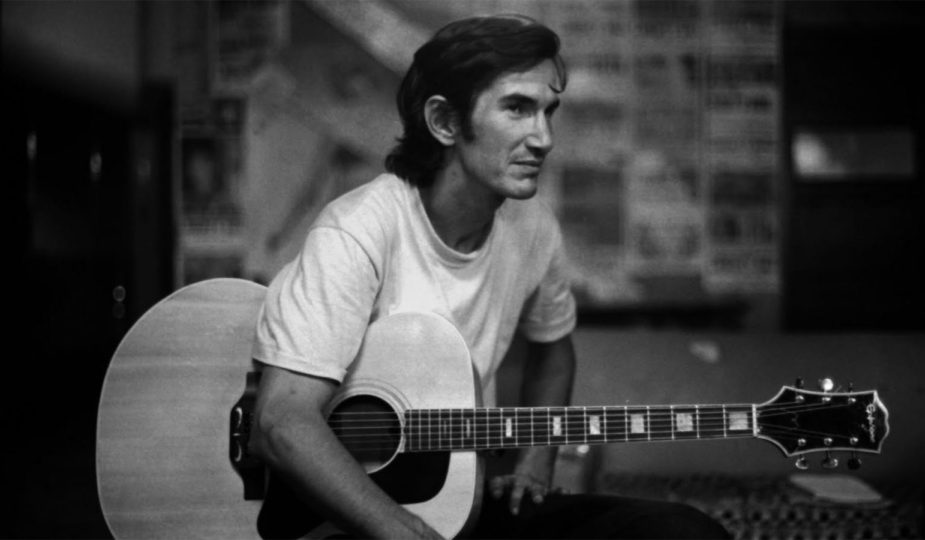
Haunting, Melancholy Poetry- Our Mother the Mountain and Townes Van Zandt 50 Years Later
Townes Van Zandt has been nicknamed the “Texas troubadour” and this is an apt description of the tragic singer-songwriter. Similar to John Keats and Dylan Thomas, Townes Van Zandt experienced a creative explosion between the ages of 24 – 25. His lyrics are inspired by the extremes in the landscapes of his home state of Texas: cold winters, hot summers, the rolling hills of east Texas, the shores of south Texas, and the vast deserts of west Texas. His lyrics are inspired by the rugged Rockies (“My Proud Mountains”). His lyrics are inspired by Mexico (“Quicksilver Daydreams of Maria”).
His lyrics are inspired by the lives of convicts (“Waiting Around to Die”), gamblers (“St. John the Gambler”), immigrants (“Quicksilver Daydreams of Maria”), and working class Americans struggling through depression (“Kathleen”), drug abuse (“Waiting Around to Die”), and poverty (“Lungs”). His lyrics are about women who lead him astray (“Our Mother the Mountain”), women who have hit hard times (Caroline from “Tecumseh Valley”), women who are illusions (“Fare Thee Well, Miss Carousel”), women who help him find himself (“Colorado Girl”), and women he fell in love with whom he lost (“Like a Summer Thursday” and “Quicksilver Daydreams of Maria”).
In 1969, Townes Van Zandt recorded two albums in Nashville, Tennessee that could arguably be considered the strongest of his entire career since they contained compositions written solely by Van Zandt himself, whereas his later albums would frequently feature multiple covers of older blues and country singers. Our Mother the Mountain was produced by “Cowboy” Jack Clement who added cinematic string sections from Bergen White and contributions from multi-instrumentalist Charlie McCoy on harmonica, organ, and recorder (who had previously worked with Bob Dylan on the ancient sounding folk songs of John Wesley Harding), jazz bassist Chuck Domanico, Don Randi on keyboards, Lyle Ritz on bass, as well as James Burton and Mike Deasy on guitars. In contrast, his self-titled album produced by Kevin Egger and recorded and released that same year featured sparser arrangements.
Townes was influenced by Appalachian country/folk and Texas blues, yet his lyrics are not indebted to any one particular style. His lyrics are poetic narratives of specific people, places, and times. “Waiting Around to Die” was one of the first songs he wrote. He re-recorded it in a stripped-down version on Townes Van Zandt. Its sad story brings tears to the eyes of blacksmith Seymour Washington when Townes plays it in the 1975 documentary Heartworn Highways. It is a catalog of interstate pain from the cradle to the grave: family violence in Tennessee (“I had a Ma, I even had a Pa, he beat it her with a belt once ‘cause she cried”), heartbreak in Alabama (“I came of age and I found a girl in a Tuscaloosa bar, she cleaned me out”), jail in Oklahoma (“We robbed a man and brother did we fly, the posse caught up with me and drug me back to Muskogee”), and addiction (“His name’s Codeine, he’s the nicest thing I’ve seen”). “Tecumseh Valley” was another song he re-recorded in a stripped-down version on Our Mother the Mountain. “Tecumseh Valley” is a heartbreaking reminiscence of a miner’s daughter in Depression-era Oklahoma who earns low wages at a bar and, after the death of her father, is forced into prostitution and an early demise. “Lungs” is a bleak, stark and tough tale about the lives of miners.
“Our Mother the Mountain” is a dark ballad of a sinister and spooky Lorelei, a siren, accompanied by the forlorn flute of Jules Jacob. “So I reach for her hand, and her eyes turn to poison, and her hair turns to splinters, and her flesh turns to brine.” Bergen White’s shivering strings accent the atmospheres in the autumnal and wintry desolation of the songs “Kathleen” (“ride the north wind down to see Kathleen”), “Second Lovers Song” (“would your words be sweeter then upon November’s wind?”), and “St. John the Gambler” (“winter howled high around the mountain’s breast and the cold of a thousand snows lay heaped upon the forest’s leaf…but the road was long beneath the feet, she followed her frozen breath…stumbling to her death…”)
“Like a Summer Thursday” is breezy June sunshine as Townes sings of his lover who has vanished, whose “face was crystal, fair and fine, and her breath was morning, and her lips were wine” while a nostalgic and wistful harmonica sighs. “Quicksilver Daydreams of Maria” was re-recorded in his preferred version on Townes Van Zandt. “Quicksilver Daydreams of Maria” is one of the most achingly beautiful love songs ever written, a portrait of the singer’s muse that moves the listener to tears with the band’s mournful and romantic Spanish guitar and violin and some of Townes Van Zandt’s most deeply moving and powerful lyrics: “So as softly she wanders I’ll desperately follow her footsteps and I’ll chase after shadows that offer a trace of her sigh. Ah, they promise eternally that she lies hidden within them. But I find they deceived me and sadly I bid them goodbye…the old washerwoman has finished her cleaning and gone…a lonely child longing looks for a place to belong.”
Our Mother the Mountain and Townes Van Zandt are haunting and timeless.
by Mark Lager

Thanks You
I want to know how to get the CSS code for rounded corners for my header, post background, and sidebar background! It’s for my blogspot blog. PLEASE tell me how to get the css code!.